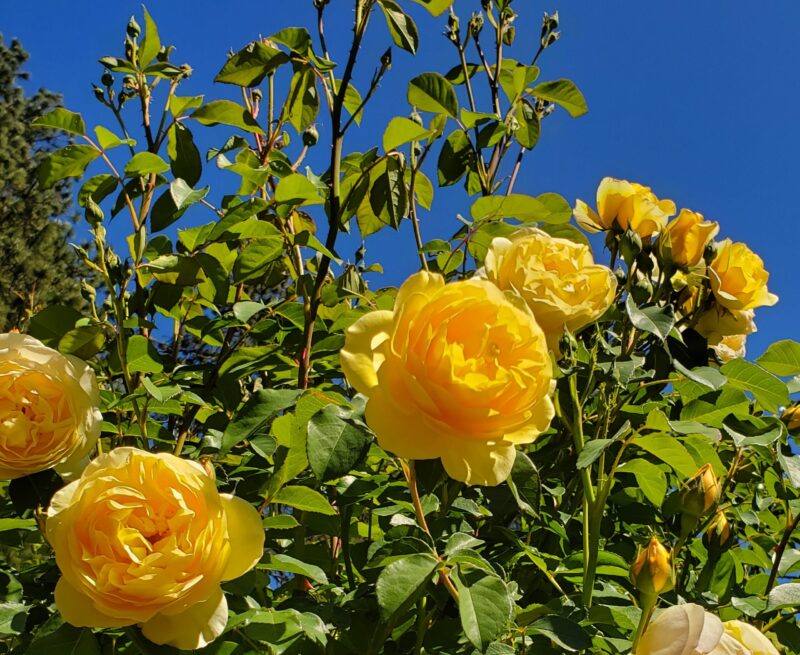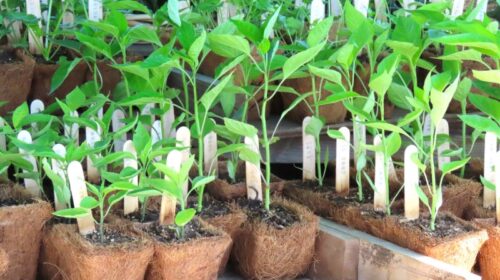The August Garden in Bloom
By Josh Reilly
In August the best place in the garden may be a big comfortable chair on a shady deck, with a good view of your Summer blooms. Penstemons, marigolds, petunias, some Salvias, some Begonias, and lots of Pelargoniums are blooming right now. Rudbeckia (black-eyed Susan), Echinacea (coneflower), and Canna are in full glory. Low-growing, varieties of Sedum (Stonecrop), are pushing up delicate clusters of tiny, yellow blooms. Grasses like Miscanthus Sinensis are starting to sport gently curving, golden brown tufts, tossing and dipping in the breeze like salt spray above shore break in late afternoon sun.
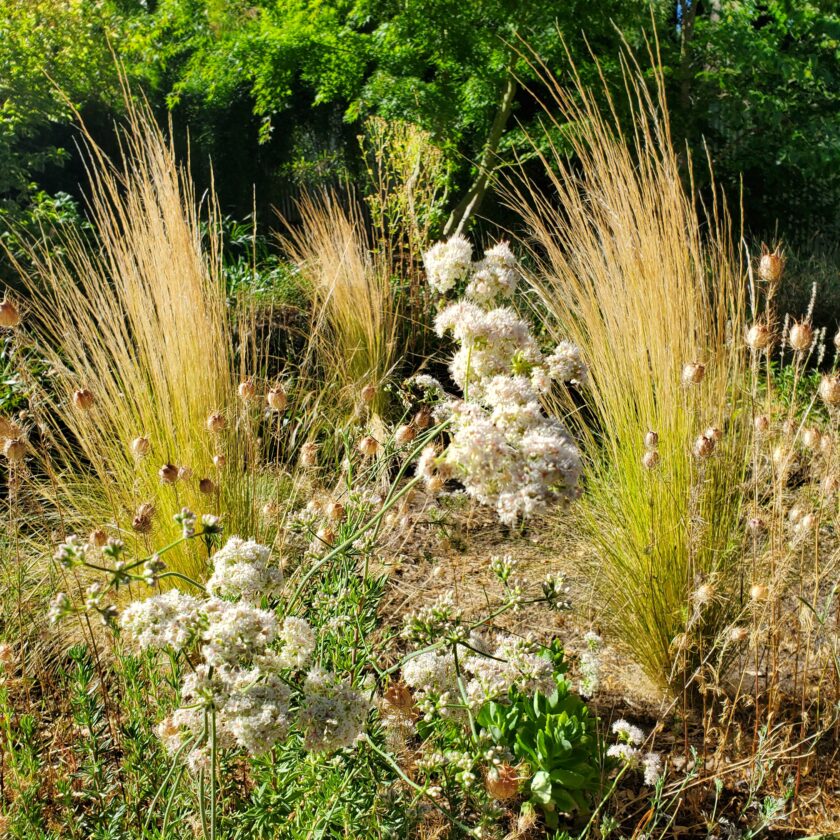
Mexican Feather Grass and California Buckwheat 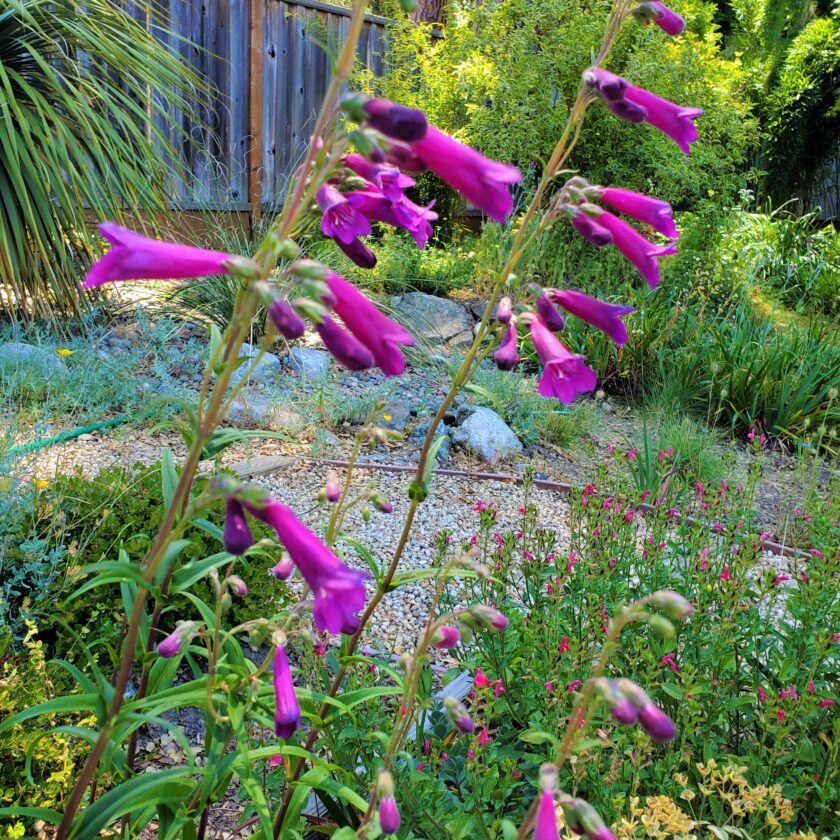
Penstemon
Grapes and apples are starting to form fruit. If you planted vegetables in Spring, you are eating them now, and soon you will find it impossible to share all your excess squash. Time to harvest onions planted last Winter and garlic planted last Fall. All your culinary herbs should be bursting with tender, pungent leaves. Thyme, sage, oregano, chives, and your first or second basil crop should be ready for harvest. Might as well just let the Cilantro bolt. The little white flowers are pretty and you can always plant more.
Catmint (nepeta), has held aloft a wispy cloud of light lavender blooms now for a couple of months. Pinch flowering Monardella (coyote mint) for a spicy, slightly dank aroma between your fingers. Teucrium (Germander) boasts a low elfin forest of light purple blooms. Mexican Feather Grass (Stipa tenuissima) is seeding itself everywhere in your garden, and your neighbor’s. Its electric, white gold color in glancing sunlight is a joy and a wonder, waving gently in the slightest breeze, bringing motion into the garden. It is, however, somewhat invasive. Be mindful of this, when deciding whether to plant it.
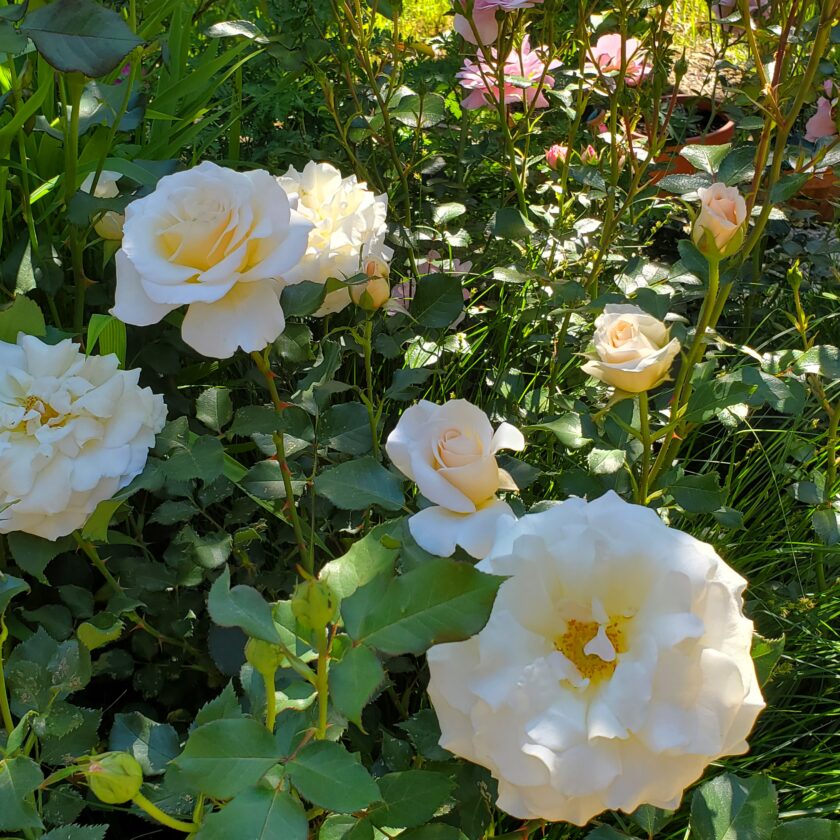
Grandiflora Rose 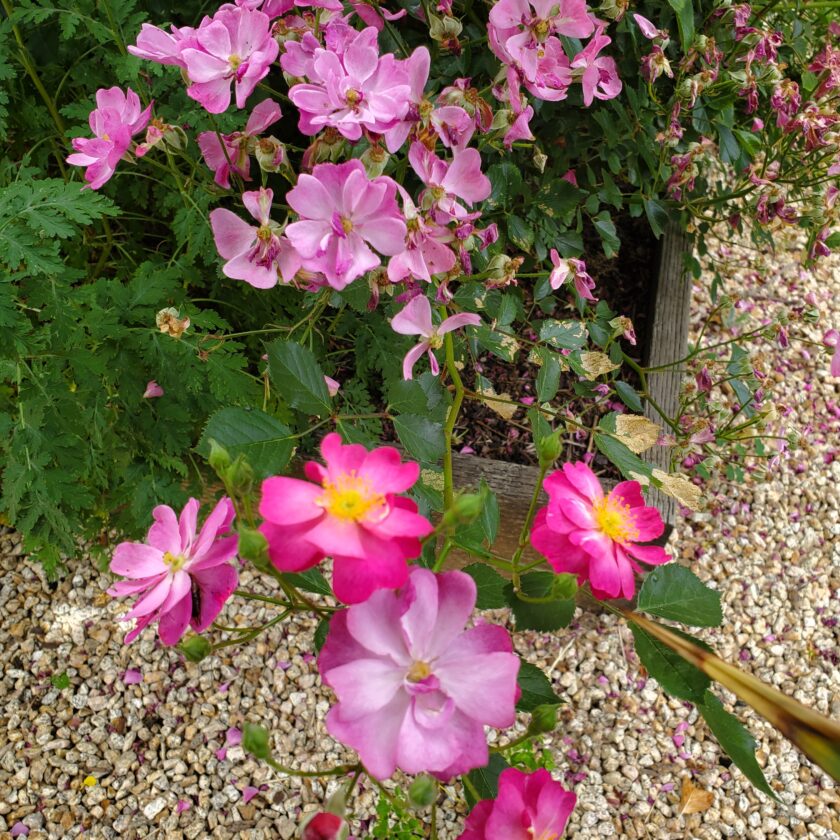
Mountain Rose 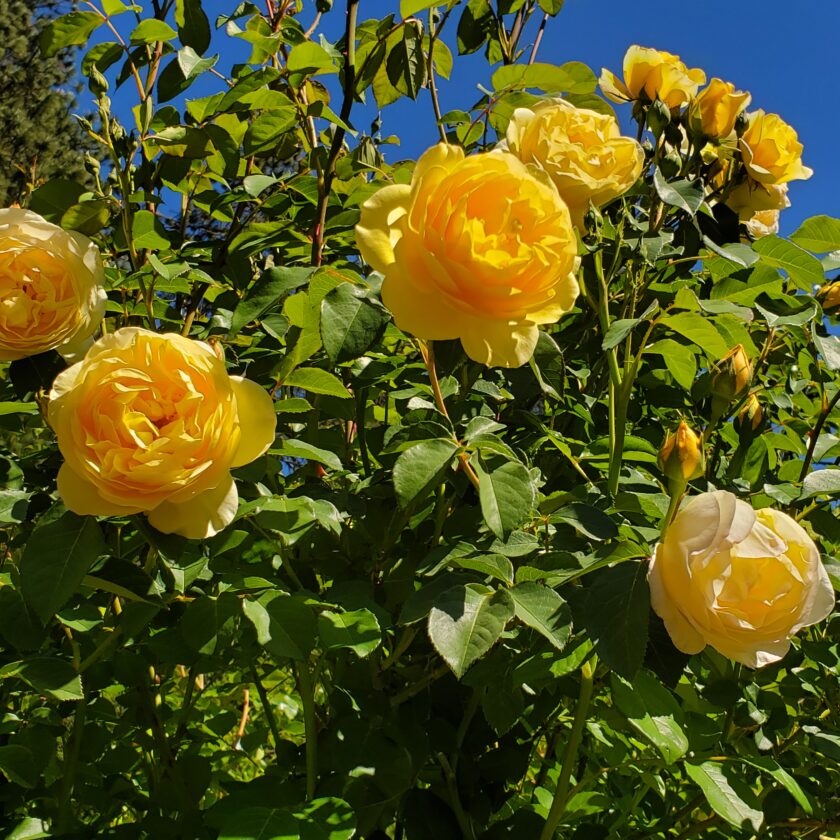
Graham Thomas Rose 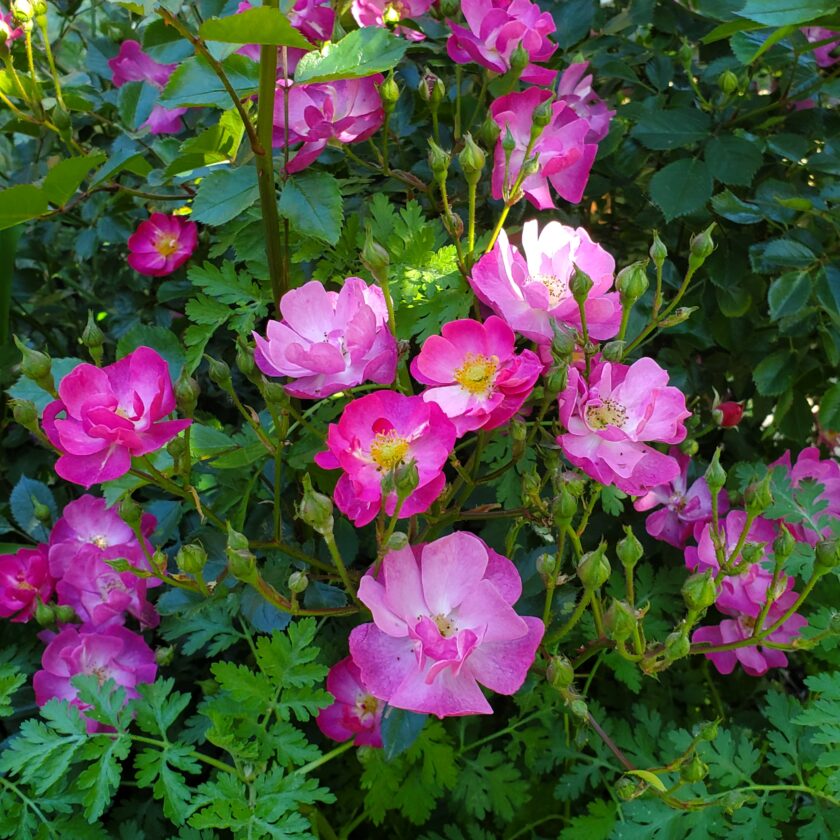
Mountain Rose
Several plants mentioned above benefit from the removal of spent flowers and stalks. This practice, known as “deadheading”, has multiple benefits, starting with a more tidy appearance. When you remove flowers before seeds develop, the plant puts more energy into foliar growth and another round of blossoms. With some plants, like your cooking herbs, deadheading is close to a necessity. With others, just a maintenance option. Many roses fall into the first category. I grow shrub roses, a Grandiflora, a huge David Austin (“Graham Thomas”), trellised over a gate, and a slow-growing rambler called “Veilchenblau” (more purple than blue). All these roses bloom in clusters. To deadhead, cut the stem 2 to 3 leaf nodes below the cluster or at the biggest, healthiest node down the stem. Don’t put your thorny rose cuttings in the compost, both to protect your hands and to deter pests, like sawfly larvae. Toss them in your green barrel.
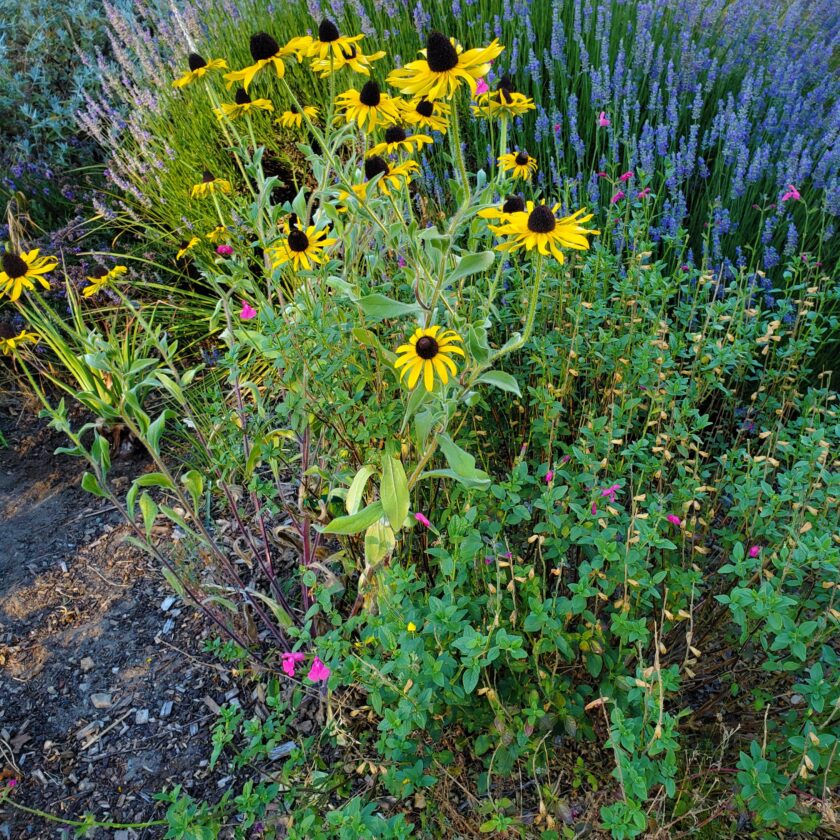
Rudbeckia, Salvia, and English Lavendar 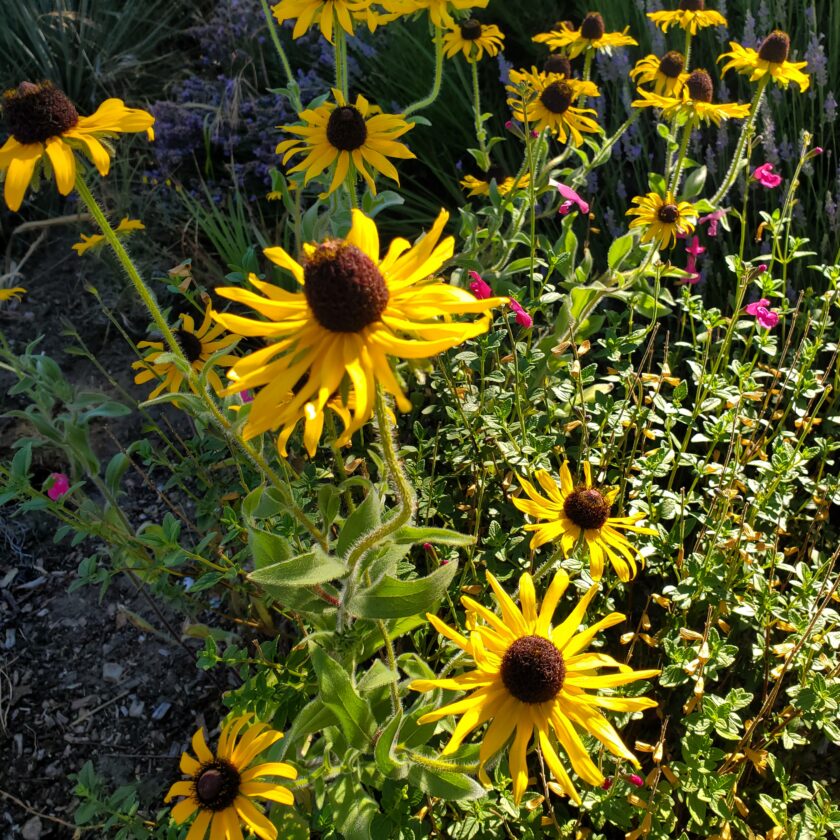
Rudbeckia 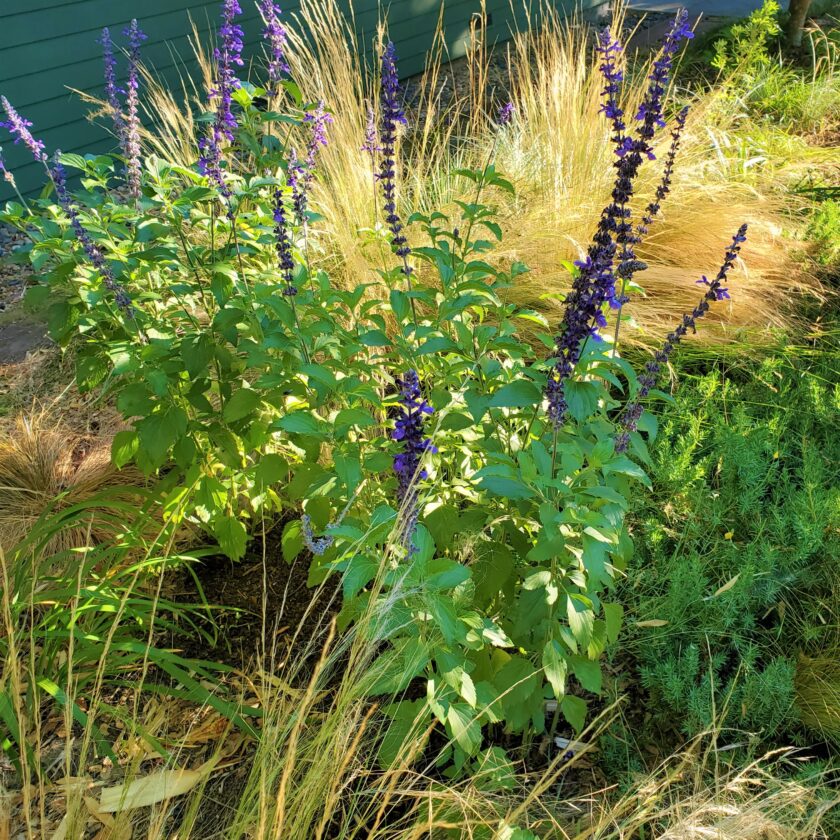
Mystic Spires Blue Salvia and Mexican Feather Grass
Many Salvias like a thorough deadheading, especially the re-bloomers or “continuous” bloomers. Don’t cut woody Salvias, like S. greggii and S. microphylla, all the way down to the woody main stems. Take the blossom and a few leaf sets below it. With very vigorous Salvias, like “Hot Lips”, you can take the blossoms and a big handful of foliage – up to 1/3. A lot of pros use hedging shears for this, however, I avoid them because they produce a blunt, broken cut. “Hot Lips” thus pruned, will look pretty grim for a few weeks, but then come right back, red and white blossoms blazing right. For Salvias that produce flowers on long shoots, cut these shoots to a healthy, well-developed leaf set, or all the way down to the crown (especially if they look old and grey or brown). Some vigorous Salvias that flower on long stalks, like the popular, purple-flowered Mexican Bush Sage, can be cut back hard in Summer and still re-bloom. Others like S. apiana should only be cut back to a healthy leaf set, one or two nodes below the blossom. S. nemerosa can go either way.
Josh Reilly, aka Uncle Skip, writes about seasonal gardening from his home in beautiful Ben Lomond, California.
Photos by Josh Reilly

